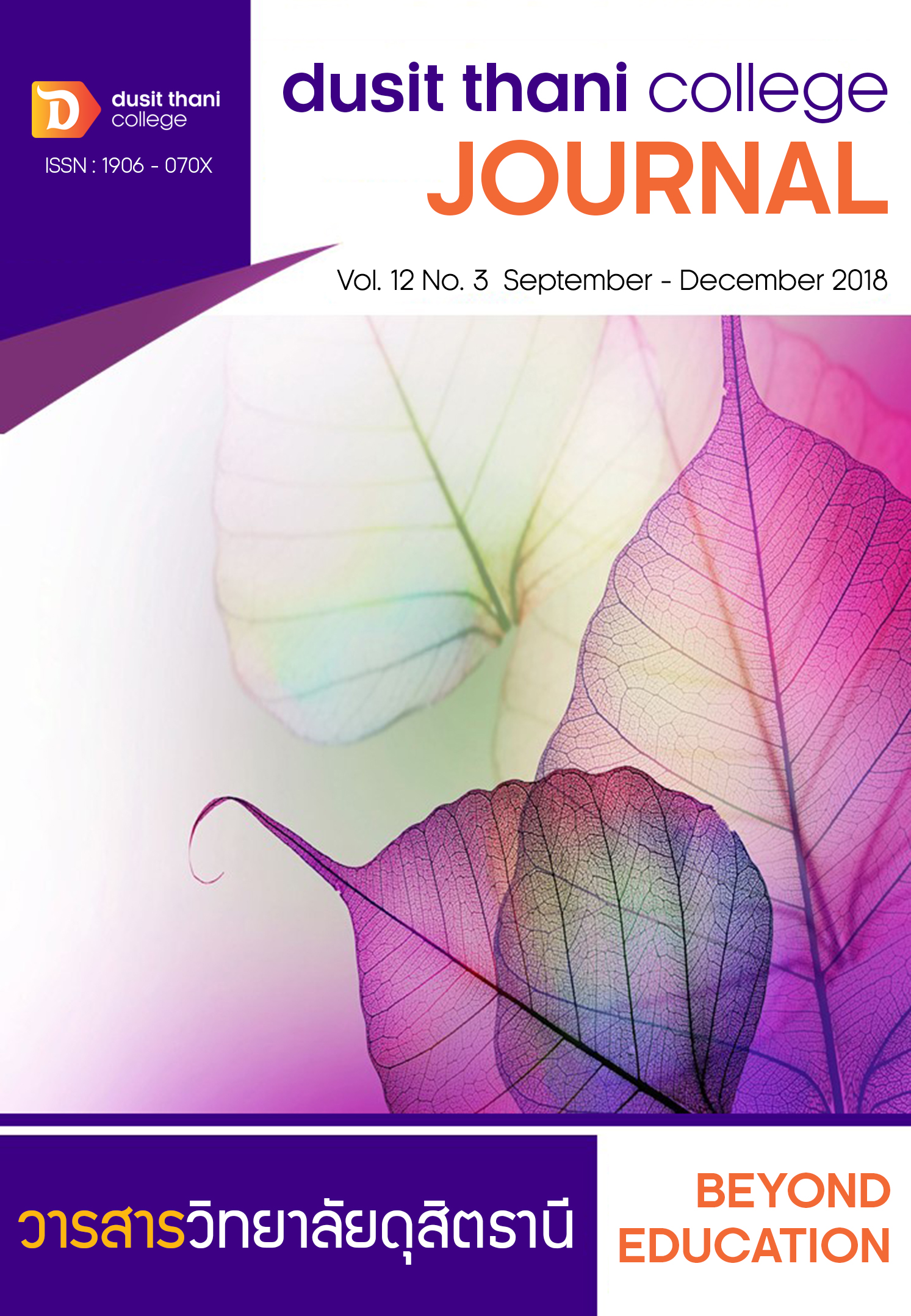การพัฒนารูปแบบเขตเศรษฐกิจชายแดนไทย - กัมพูชา เพื่อเข้าสู่ประชาคมอาเซียน
Main Article Content
บทคัดย่อ
วัตถุประสงค์การวิจัย เพื่อศึกษาระดับความพร้อมในการพัฒนาเขตเศรษฐกิจชายแดน ระดับความสำเร็จในการดำเนินงานตามยุทธศาสตร์การเข้าสู่ประชาคมอาเซียน และพัฒนารูปแบบเขตเศรษฐกิจชายแดนไทย-กัมพูชา เพื่อเข้าสู่ประชาคมอาเซียน ประชากร ได้แก่ ผู้ประกอบการ นักท่องเที่ยว ผู้บริหารองค์การส่วนท้องถิ่น และผู้บริหารด่านศุลกากร ตามจุดผ่านแดนถาวร การสุ่มตัวอย่างแบบหลายขั้นตอน เครื่องมือที่ใช้ คือ แบบสอบถาม สถิติที่ใช้ ได้แก่ ค่าเฉลี่ย และส่วนเบี่ยงเบนมาตรฐาน และการวิเคราะห์โมเดลสมการโครงสร้าง ผลการวิจัย พบว่า ระดับความพร้อมในการพัฒนาเขตเศรษฐกิจชายแดนไทย-กัมพูชา อยู่ในระดับปานกลาง
โดยขีดความสามารถของผู้ประกอบการท้องถิ่นสูงสุด ระดับความสำเร็จในการดำเนินการตามยุทธศาสตร์การเข้าสู่ประชาคมอาเซียน อยู่ในระดับปานกลาง โดยการเสริมสร้างความสามารถในการแข่งขันและพัฒนาคุณภาพชีวิตสูงสุด ผลการวิเคราะห์โมเดลสมการโครงสร้าง พบว่า ความพร้อมในการพัฒนาเขตเศรษฐกิจชายแดนไทย-กัมพูชา ส่งผลต่อความสำเร็จในการดำเนินการตามยุทธศาสตร์การเข้าสู่ประชาคมอาเซียน ร้อยละ 77 รูปแบบเขตเศรษฐกิจชายแดนไทย-กัมพูชา เพื่อเข้าสู่ประชาคมอาเซียน คือ มาตรฐานการให้บริการและขีดความสามารถของบุคลากร ระบบการคมนาคมขนส่ง ขีดความสามารถของผู้ประกอบการท้องถิ่น และระบบ โลจิสติกส์
Article Details
นโยบายการพิจารณากลั่นกรองบทความ
- บทความวิจัยและบทความวิชาการทุกเรื่องที่จะได้รับการตีพิมพ์ต้องผ่านการพิจารณากลั่นกรองโดยผู้ทรงคุณวุฒิ (Peer Review) ในสาขาที่เกี่ยวข้อง จำนวน 3 ท่าน/บทความ
- บทความ ข้อความ ภาพประกอบและตารางประกอบที่ลงตีพิมพ์ในวารสารเป็นความคิดเห็นส่วนตัวของผู้เขียน กองบรรณาธิการไม่จำเป็นต้องเห็นด้วยเสมอไป และไม่มีส่วนรับผิดชอบใด ๆ ถือเป็นความรับผิดชอบของผู้เขียนแต่เพียงผู้เดียว
- บทความที่จะได้รับการตีพิมพ์จะต้องไม่เคยตีพิมพ์ เผยแพร่ที่ใดมาก่อน และไม่อยู่ระหว่างการพิจารณาของวารสารฉบับอื่น หากตรวจสอบพบว่ามีการตีพิมพ์ซ้ำซ้อน ถือเป็นความรับผิดชอบของผู้เขียนแต่เพียงผู้เดียว
- บทความใดที่ผู้อ่านเห็นว่าได้มีการลอกเลียนหรือแอบอ้างโดยปราศจากการอ้างอิง หรือทำให้เข้าใจผิดว่าเป็นผลงานของผู้เขียน กรุณาแจ้งให้กองบรรณาธิการวารสารทราบจะเป็นพระคุณยิ่ง
เอกสารอ้างอิง
http://bts.dft.go.th /btsc/files/SituationCambodia/13.pdf. Access date August 31th, 2014.
2. Department of Foreign Trade. (2014B). Border trade and cross border trade statistics of Thailand 2011-2014 (January-July). (Online). Form http://bts.dft.go.th/btsc/files/ Border Trade Service Center/ 1.Reported trade statistics/2557/7_July_2014.pdf. Access date September 1st , 2014.
3. Khlong Yai Customs House. (2017). Measures of Customs and Development to AEC. (Online). Form https://www.klongyai-customs.com/14076404/มาตรการกรมศุลกากรกับการพัฒนาสู่-aec. Access date August 14th, 2017.
4. Office of The National Economic and Social Development Board. (2011). The Eleventh National Economic and Social Development Plan (2012 - 2016). (Online). Form http://www.nesdb.go.th/ download/article/article_20160323112431.pdf. Access date September 9th, 2014.
5. Phunaris, Sittiporn and Rungruangsapakun, Wantanee. (2007). Potential and Constraints on Border Trade Development : Mae Hong Son province. Bangkok: National Research Council of Thailand.
6. Strategy and Evaluation Department. (2014). Strategic Accession to ASEAN Community in 2015. (Online). Form http://asean.bangkok.go.th/index.php/2014-02-15-14-09-21/2558. Access date September 2nd, 2014.
7. Suksawang, Poonpong. (2013). (Structural Equation Modeling. Bangkok: Printing house wattanaphanit.
8. ThairathOnline. (2017). Land transport rear end. (Online). Form https://www.thairath.co.th/content/917825. Access date August 14th, 2017.
9. ThonThan, Weerayut. (2012). Approach of Empowering Reinforcement toward Constant Competencies of Business Operation from Entrepreneur amidst Border Trade between Thai-Loa particularly North Eastern Region Areas for Preparation of Asean Community. Naresuan University Journal: Science and Technology (NUJST); 20(2): 67-77.


